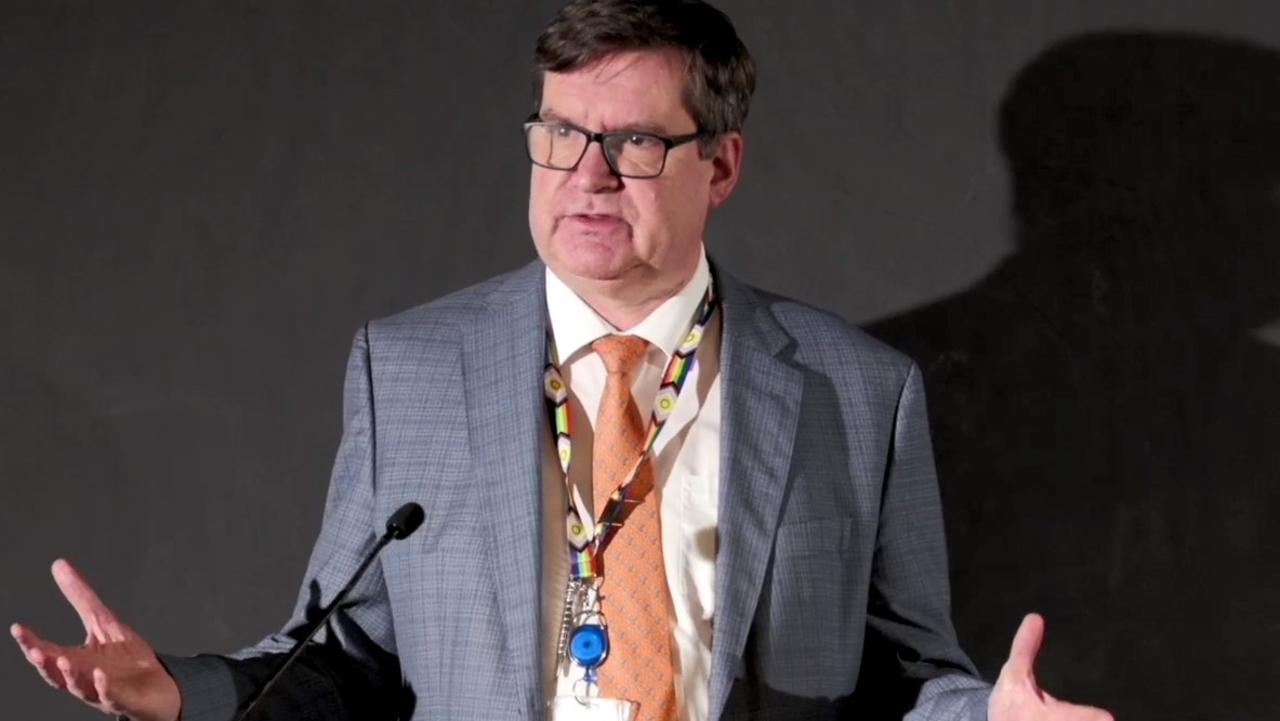Patrick Carlyon: Coronavirus vaccine’s arrival will divide Australia like never before
When the coveted coronavirus vaccine reaches Australia, five millions doses will in no way cover 25 million people. So, in what order will we receive the jab — and when?
Coronavirus
Don't miss out on the headlines from Coronavirus. Followed categories will be added to My News.
Who should get the vaccine first?
Early next year, Australia will be divided like never before. Five million doses, as expected to start in March, will not cover 25 million people.
Australia has secured rights to something like 135 million COVID-19 vaccine doses, enough to theoretically cover every Australian five times over.
But their effectiveness and timing are largely unknowns.
Vaccination demand will probably outweigh supply for most of 2021. Some people who desperately seek a jab will have to wait far longer than others.
The uncomfortable truth is that there probably will not be enough doses to cover all the susceptible. Not at first, not at the same time.
The Australian Technical Advisory Group on Immunisation has been pondering priorities for months.
Its documentation is necessarily open-ended, given unanswered questions about the reliability of different vaccines and their length of protection.
As ATAGI admits, “deciding upon which groups to prioritise is difficult and contentious”.
“Even if they prove to be effective in preventing disease, some vaccines may not prevent acquisition or ongoing transmission of the virus, making herd immunity an unachievable program goal,” says ATAGI’s preliminary advice literature.

“Those at highest risk” seems like an easy starting point. Health Minister Greg Hunt has promised no surprises. But the notion quickly gets muddled.
The elderly are the obvious first candidates. They are far more likely to die of COVID-19, especially those in aged care accommodation.
The aged and health workers were England’s priorities when it rolled out its vaccination program this week. Margaret Keenan, 90, was the first recipient in a series of hubs that targets those groups.
Such a prioritised approach satisfies snap measures of decency and common sense.
So does prioritising those people with conditions that increase their risk from COVID-19, such as diabetes.
But what of other high-risk categories? Should prisoners, ordinarily deprived of the rights of the free, be at the top of the list? Like aged-care facilities, prisons are potential hotbeds for the virus.
It is universally agreed that the greatest good lies in best stemming spread in the community. But if the rollout is start-stop-start, as it appears it will be, how do you identify the most worthy recipients?
In effect, everyone who gets an early jab deprives someone else of an early jab. There is no “right” answer when subjective judgments separate the needy into winners and losers.
When is “fairness” unfair?

The lucky first to be vaccinated will shed the restrictions that have defined 2020. They will be able to mix as they once used to. They will be a privileged class. To borrow from George Orwell, these Australians will be “more equal” than others.
Back in September, AMA national president Omar Khorshid spoke of the need for a transparent plan. Hunt has emphasised fairness in priorities, but the absence of clear markers exposes the commitment to debate.
Canada faced a similar dilemma in 2009, when shots for a swine flu pandemic, H1N1, became available. The initial decision, to prioritise vaccinations of prisoners and the obese, didn’t fly with the public. Research later concluded that the feeling was driven by anti-fat sentiment.
Very obese people are more susceptible to COVID-19. They are flagged as first receivers in ATAGI’s preliminary work. Could scarcity of vaccine, and community attitudes, influence the place of overweight people in the pecking order?
What of those who want to pay to be vaccinated, as opposed to the government’s free program? They could go direct to suppliers to secure a jab. Should they be allowed to “jump” the queue?
And what about a conflicting theory, rejected by Britain and Australia, that advocates the vaccination of young, healthy people first?
The young are more likely to spread the virus because they are more sociable. Yet they, as individuals, are less likely to get seriously sick.
The argument goes that vaccinating them first serves to protect more people.
It’s yet to be proved with COVID-19 jabs, but many vaccines are less effective for people with compromised immune systems.
Vaccinating the young could lead to herd immunity far faster. But it also defies the instinctive response, given their candidacy would then extend the exposure of at risk individuals who would otherwise receive the vaccine sooner.
This year, Victoria was separated from the rest of the country after a second outbreak. Next year, national divides will be harder to judge.
Those who get a jab will enjoy freedoms and a sense of wellbeing that those who cannot access the vaccination will not.
If 2020 was a time of crisis, 2021 looks set to again challenge our sense of first-world equality with tricky questions about haves and have-nots.
PATRICK CARLYON IS A HERALD SUN COLUMNIST





